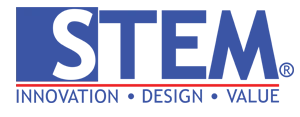The Complete Guide to Cost of Goods Sold (COGS) helps you understand the true cost behind every product sold—from beginning inventory and net purchases to ending inventory—enabling you to set the right selling price, monitor gross profit, and maintain business profitability.
Ever Scratched Your Head in Confusion?
Your products are flying off the shelves, orders keep rolling in, but when you check your bank account at the end of the month… the profit barely budges—or worse, you’re in the red? If that sounds familiar, you might be missing a key player in your business: a financial detective called Cost of Goods Sold (COGS).
Relax. This isn’t some complicated accounting jargon reserved for CPAs. Quite the opposite—COGS is every business owner’s best friend, whether you’re running a street-side coffee stall or managing a large-scale manufacturing plant. It’s the honest number that whispers, “Hey, this is your actual cost for every product sold.”
In this article, we’ll unpack the concept of COGS in the simplest language possible. Think of it as a casual conversation—we’ll cover everything you need to know to master it. Our goal is clear: to help you not just stay busy, but truly profitable. Let’s dive in.
What Is Cost of Goods Sold (COGS)?
Let’s begin with the basics—don’t worry, no textbook definitions that make your head spin.
Put simply, Cost of Goods Sold (COGS) is the total direct cost you incur to produce or acquire the goods you’ve sold within a specific time period.
Imagine you’re selling custom-printed T-shirts:
- Plain T-shirt cost: IDR 30,000
- Printing ink per shirt: IDR 5,000
- Labor to print one shirt: IDR 5,000
The total direct cost—or the COGS—for one shirt is IDR 30,000 + IDR 5,000 + IDR 5,000 = IDR 40,000.
That IDR 40,000 is your pure product cost.
It’s important to note: expenses like store rent, admin salaries, electricity bills, or Instagram marketing are not included in COGS. Those are operational costs—expenses needed to run the business, not to produce the product itself.
COGS focuses solely on costs directly attached to goods sold. If the item hasn’t been sold and is still in your warehouse? It doesn’t count yet—it remains as inventory. Simple, right? COGS = the cost of goods that have actually been sold.
Gain clarity and take charge of your numbers with Sterling Team’s accounting solutions.
Why Is COGS So Crucial for Your Business?
You might hear someone shrug it off: “Why bother calculating COGS? Just sell and profit will follow.”
This mindset is risky. Ignoring COGS is like driving at night without headlights—you may move forward, but you won’t see the cliff ahead.
Here are some solid reasons why COGS is your business compass:
Set the Right Selling Price:
How can you set a price of IDR 50,000 if you don’t know your cost is IDR 40,000? Without knowing COGS, you’re pricing based on guesswork or following competitors blindly—an easy route to losses.
Measure Gross Profit:
Gross profit is the heartbeat of any business.
Formula: Gross Profit = Revenue – COGS
This tells you if your products are healthy profit-wise, before considering overheads.
Control Production/Purchasing Costs:
Track your COGS consistently and you’ll spot trends. “Wait, why is COGS higher this month?” You’ll dig deeper—maybe raw materials got pricier or production is wasteful. COGS is your early warning system.
Support Strategic Decisions:
COGS gives you critical answers:
Which products are most profitable?
Should you switch suppliers?
Is a 20% discount still viable?
These aren’t guesses—they’re data-driven decisions powered by COGS.
Mandatory for Financial Reports:
If you aim to scale, attract investors, or apply for loans, a Profit & Loss Statement is essential. And guess what? COGS is one of its core components.
In short, COGS isn’t just a number—it’s your business analyst, your expense watchdog, and your silent strategist, all rolled into one.
Discover how Sterling Team can give you a clear financial dashboard to guide every decision.
Breaking Down the Key Components of COGS
To calculate COGS, we need to know the ingredients. There are only three main components—let’s explore them using an example from a fictional shoe store, “Langkah Maju”.
1. Beginning Inventory
This is the value of your inventory at the start of the period (e.g., January 1).
Think of it as the leftover stock from last month.
- Example: On July 1, “Langkah Maju” has unsold shoes in the warehouse worth IDR 20,000,000. That’s the beginning inventory.
2. Net Purchases
This includes everything spent on acquiring new stock during the period, minus discounts and returns.
Formula: (Total Purchases + Freight) – (Discounts + Returns)
- Example: In July, they bought shoes worth IDR 50,000,000. Delivery costs: IDR 1,000,000. Discounts: IDR 2,000,000. Returned goods: IDR 500,000.
- Net Purchases = (IDR 50,000,000 + IDR 1,000,000) – (IDR 2,000,000 + IDR 500,000) = IDR 48,500,000
3. Ending Inventory
This is the value of remaining inventory at the end of the period (e.g., July 31). You need to perform a physical stock count.
- Example: On July 31, their team finds IDR 15,000,000 worth of unsold shoes in stock. That’s the ending inventory.
These three components are the foundation of your COGS calculation. Once you have them, the rest is easy.
Automate your COGS process with Sterling Team’s integrated system.
The Ultimate Formula: How to Calculate COGS

Here’s the universal formula for trading businesses:
COGS = Beginning Inventory + Net Purchases – Ending Inventory
The logic: (Starting Stock + Purchased Stock) gives you total available inventory. Subtract the unsold stock at the end, and you get the value of what’s been sold—your COGS.
Let’s apply it to Langkah Maju:
- Beginning Inventory: IDR 20,000,000
- Net Purchases: IDR 48,500,000
- Ending Inventory: IDR 15,000,000
COGS = IDR 20,000,000 + IDR 48,500,000 – IDR 15,000,000 = IDR 53,500,000
So, the total cost of shoes sold in July = IDR 53,500,000
If their July revenue was IDR 80,000,000, then gross profit = IDR 26,500,000.
Easy, right? Just be disciplined in tracking the three key inputs.
Get real-time, accurate COGS numbers with Sterling Team.
COGS vs. Selling Price vs. Operating Expenses
One of the most common beginner mistakes is confusing these three. But each plays a very different role. Here’s a simple comparison:
| Term | Role | Analogy of a Rice Stall |
|---|---|---|
| COGS | Product Capital | Cost of rice, chicken, spices, vegetables to make 1 plate of chicken rice |
| Selling price | Money paid by Customers | The price listed on the menu is for 1 plate of chicken rice (including COGS + profit) |
| Operating costs | Capital to Run a Shop | Kiosk rental fees, chef & waiter salaries, electricity, gas, cleaning |
Understanding these differences is critical. You may have low COGS, but if operating costs are too high, your net profit could vanish—or turn negative. Smart business means balancing all three.
Get a helicopter view of your business finances with SAP-powered reporting from Sterling Team.
Is COGS the Same Across All Business Types?
The principle remains: COGS tracks direct costs of sold products. But components vary by business model.
- Trading Businesses (Retail, Distribution)
The simplest form—COGS comes from finished goods inventory. - Manufacturing Businesses
More complex—COGS includes:- Direct Raw Materials
- Direct Labor (e.g., machine operators)
- Manufacturing Overhead (e.g., electricity, equipment depreciation)
- Service Businesses
Technically don’t have COGS, as there’s no physical inventory. Instead, they calculate Cost of Revenue (e.g., expert hours billed to clients). - Food & Beverage (F\&B)
Similar to mini-manufacturing—COGS includes all ingredients for each menu item (e.g., a coffee’s beans, sugar, milk, and cup).
Whatever your industry, the goal is the same: know your real cost of goods sold.
Explore Sterling Team’s tailored solutions for every business type—from retail to manufacturing.
Final Thoughts: COGS Is Your Business Compass
We’ve come a long way—from understanding what COGS is, to calculating it properly. The key takeaway?
Never underestimate the power of knowing your COGS.
It’s not a dull admin task—it’s your compass. Your in-house doctor. Your trusted advisor. It diagnoses your products’ health, reveals hidden issues, and supports smarter decisions.
Yes, it may seem tedious at first. But that initial effort will save you from costly mistakes down the road.
Don’t fear the numbers—master them*, and you’ll steer your business with confidence and precision.
Here’s to your profitable journey.


